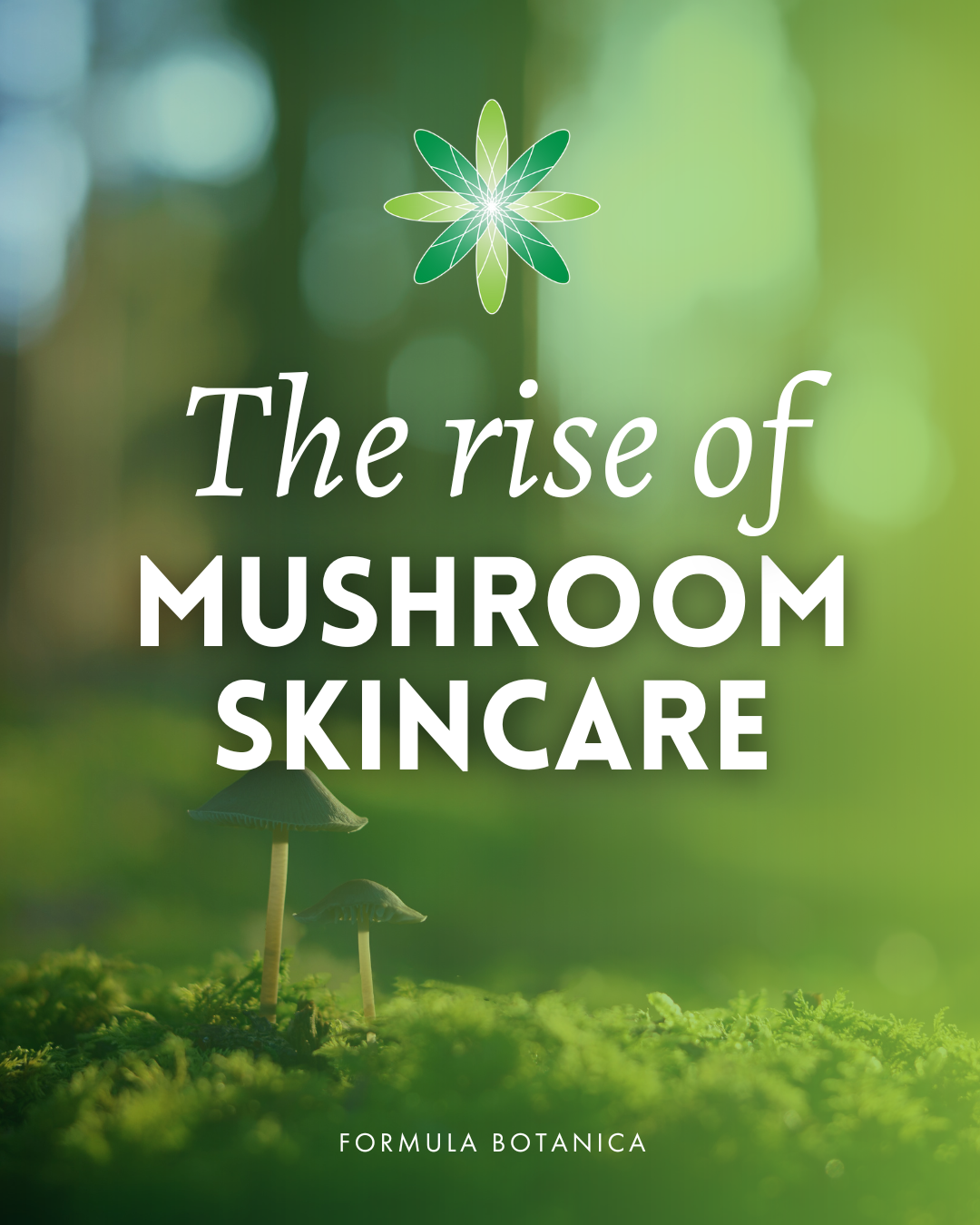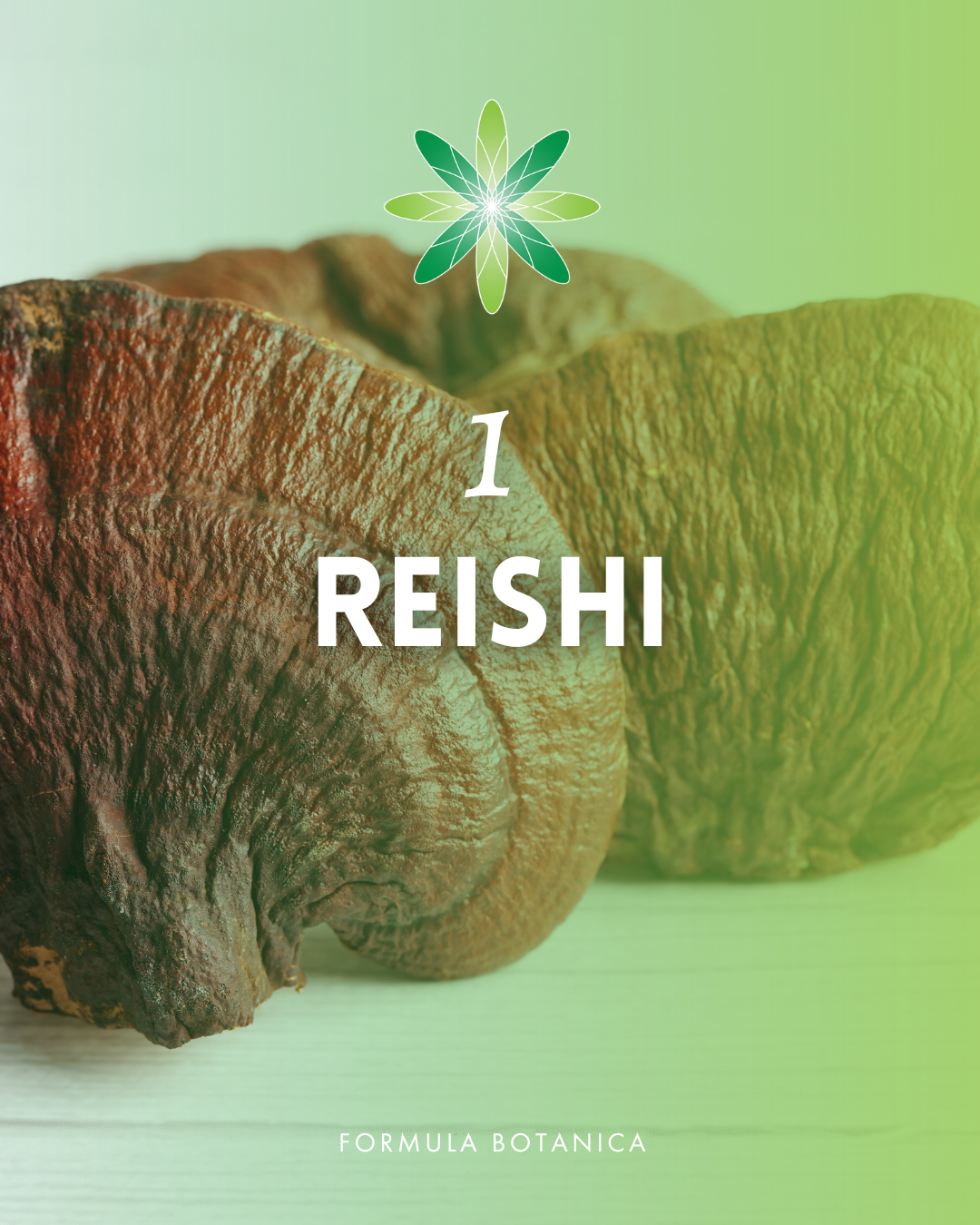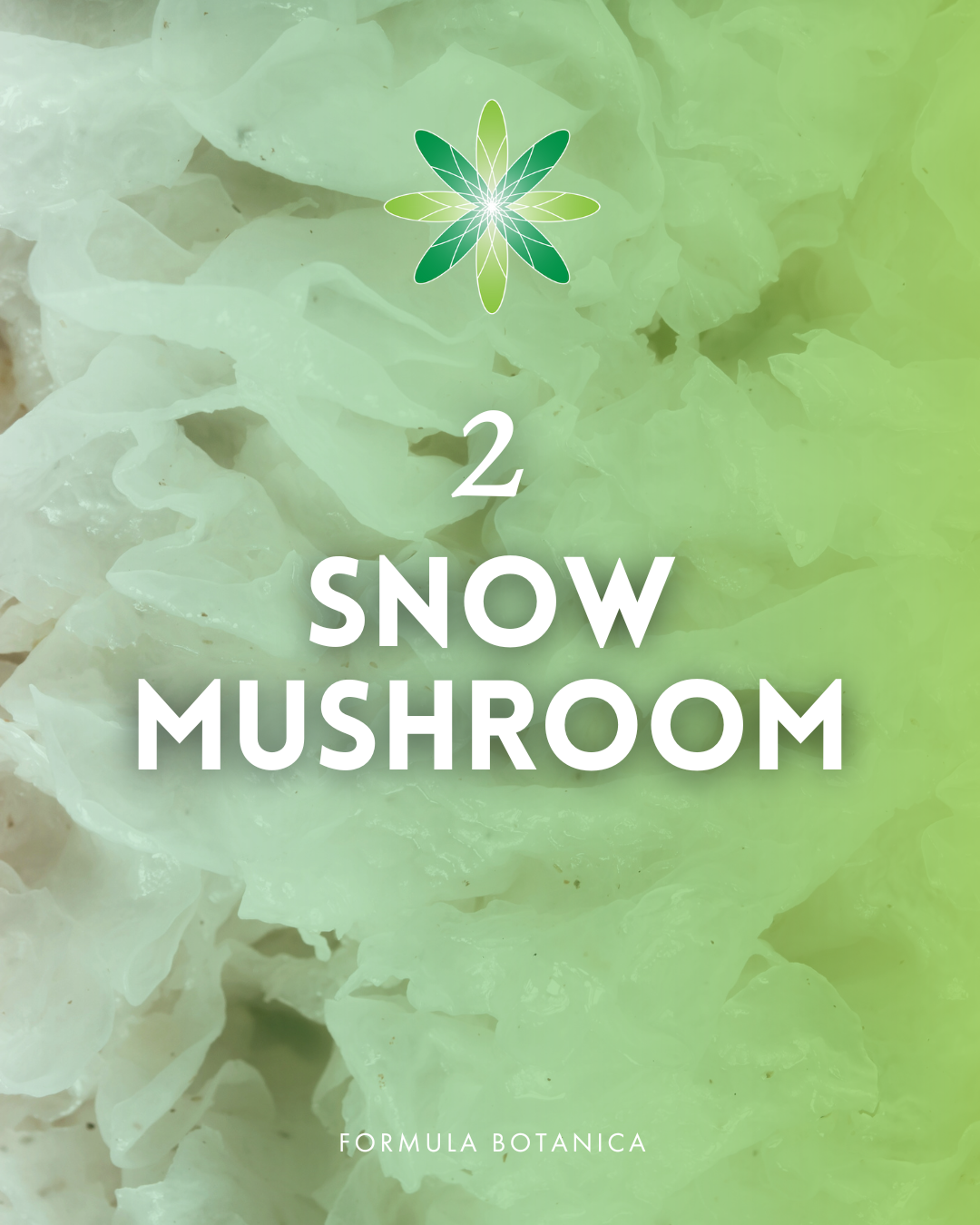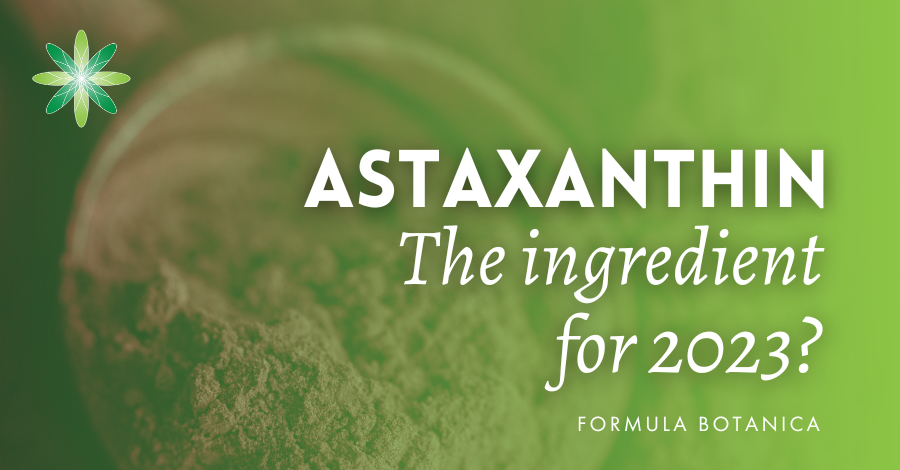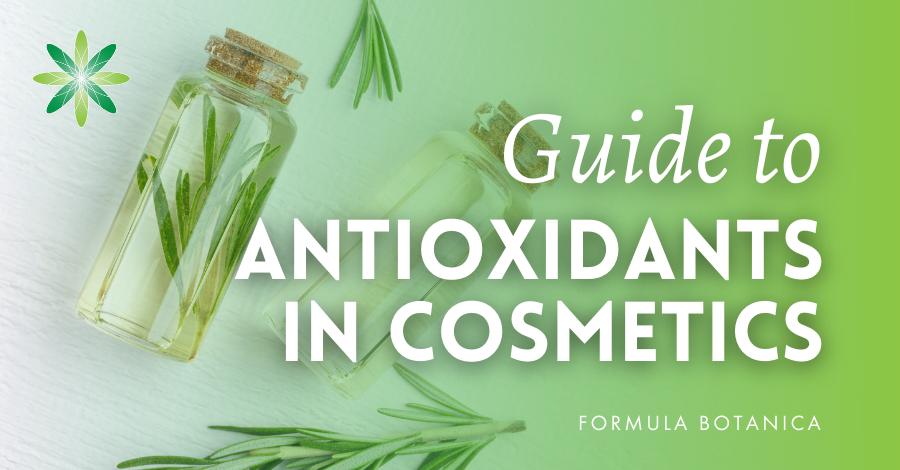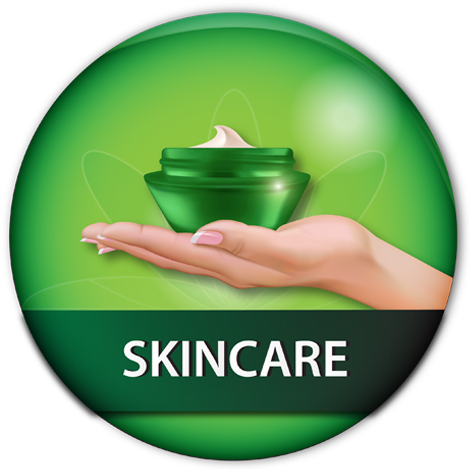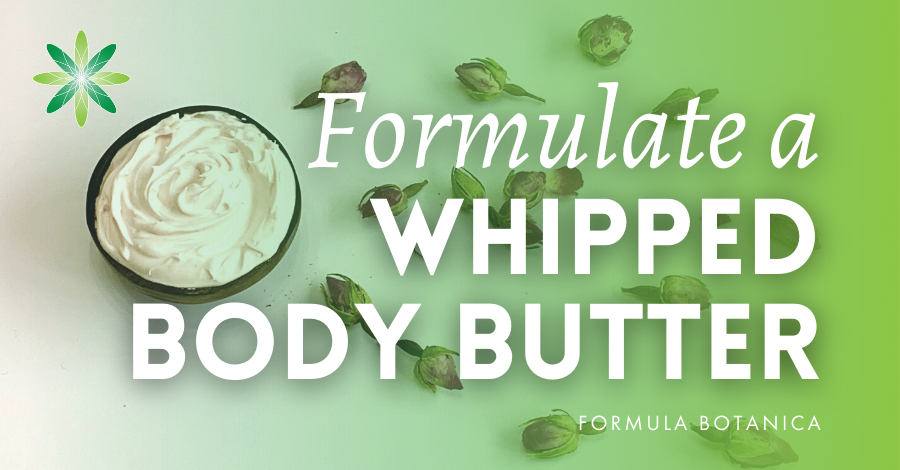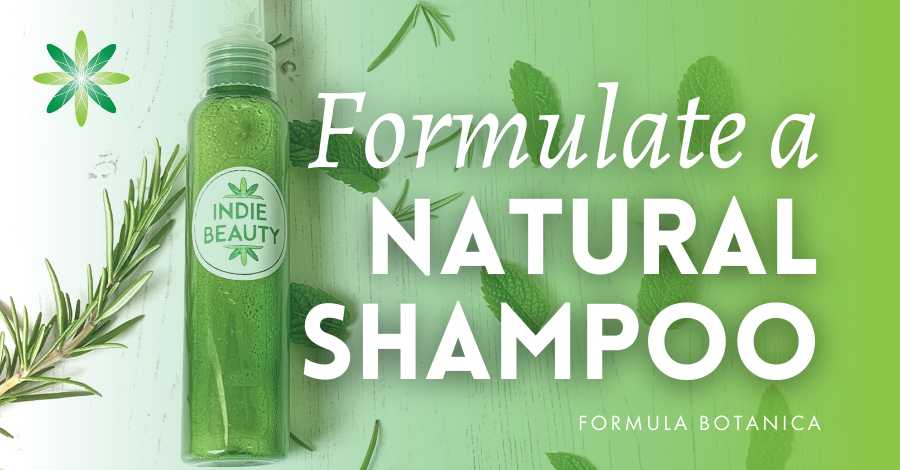Have you noticed how mushrooms are everywhere right now? From innovative biodegradable packaging to antioxidant-rich mushroom extracts, fungi are currently having a major moment in skincare. And they’re here to stay.
At Formula Botanica, the world’s leading online formulation school, we’ve been championing the benefits of mushrooms for many years. Not only are mushroom-based cosmetic ingredients antioxidant, hydrating and soothing, but they are also very easy to formulate with.
In this post, I’ll guide you through everything you need to know about formulating with mushroom extracts, from their incredible skincare benefits to the wide range of mushroom-based ingredients available to you as a natural formulator. Let’s get started!
Why mushrooms are trending
Mushrooms are one of the trendiest ingredients in skincare right now, and I totally get why.
When you formulate with mushroom extracts, you’re not just getting a single benefit; you’re getting multiple benefits at once. Mushrooms are truly multifunctional: they can provide hydration, antioxidant protection, and soothing action all in one, and some extracts may even help brighten the skin or offer antimicrobial support.
For you as a formulator, this is great news; a single mushroom extract can deliver several benefits in your serums, gels, or creams, opening up lots of creative possibilities!
Do mushroom extracts work? Benefits & properties
Do mushroom-based extracts actually work, or are they just a passing trend? I looked into it, and here’s what I found.
Some of the bigger claims – like reducing visible signs of ageing or acting as antimicrobials – still need more in vivo studies (where it’s tested on humans). But here’s what we do know:
- Hydration: Mushroom polysaccharides (a type of long-chain sugar molecule linked together), especially beta-glucans (a type of polysaccharide), retain water beautifully, meaning they boost skin hydration. They also give serums that “plump” skin feel and can help reduce transepidermal water loss (TEWL).
- Antioxidant action: Many mushroom-based extracts help neutralise free radicals, helping to reduce the impact of daily stressors on skin.
- Soothing properties: Mushrooms like reishi can help calm irritation and redness, so they’re great for sensitive-skin formulations.
So yes – mushroom extracts do earn their place in your formulator’s lab. They may not be magic (and no single ingredient is!), but they offer multiple benefits in just small quantities. And you should definitely give them a go!
Top 4 mushroom ingredients to use in your formulations
As mentioned before, mushroom-based ingredients are great additions to your skincare formulations, as they’re incredibly versatile.
Below are the top 4 ingredients I’d recommend you start with first:
1. Reishi mushroom
INCI: Ganoderma Lucidum Extract
You’re probably already familiar with reishi as a superfood ingredient in your smoothies or coffee, but did you know it’s also a great cosmetic ingredient for your natural skincare formulations?
What it’s like to work with
Reishi extract has a deep, earthy hue and woody aroma. It has a grounding, almost ancient quality. No wonder it’s called the “mushroom of immortality”!
When blended into water, it disperses easily, imparting a natural richness to your formulations.
Properties & benefits
Reishi is rich in polysaccharides and ganoderic acids, which are antioxidant compounds that provide soothing and hydrating effects. Reishi extract is also used for brightening, as some studies suggest it can gently even skin tone by moderating melanin activity.
You can learn more about antioxidants below:
How to formulate with reishi
Reishi is available as either a water-soluble powder or liquid extract. Add it to your water-based formulations for its antioxidant, soothing, and hydrating properties.
To use reishi, simply add it to the cool-down phase, below 40°C, between 1-5%. Before formulating with a new ingredient, always check your supplier’s data sheet.
Pro tip: If you’re relatively new to formulation, start with a liquid extract. Liquid extracts are easiest for beginners, as powders need a bit of stirring to dissolve fully.
2. Snow mushroom
INCI: Tremella Fuciformis Extract
Next is snow mushroom, which is said to be even more hydrating than hyaluronic acid!
I love using this mushroom in hydrating serums, gels and creams. It’s also my favourite ingredient in this list.
What it’s like to work with
Snow mushroom extract has a soft, almost jelly-like quality when hydrated.
I remember being surprised the first time I stirred it into water and watched it thicken slightly, almost like a natural gel.
It feels smooth and cushiony on the skin, which makes it a super fun ingredient to play with in serums and creams!
Properties & benefits
Snow mushroom is often compared with hyaluronic acid because its polysaccharides can hold large amounts of water. This makes it an effective skin hydrator, giving your formulations a plump, cushioned feel.
Alongside that, snow mushroom offers antioxidant support, making it truly multifunctional.
You can find out more about hyaluronic acid in the post below:
How to formulate with snow mushroom
If using snow mushroom powder, start by blending it into glycerine before dispersing it into water, as this helps achieve the best results. You can then add it to the water phase or cool-down phase of your formulation, below 50°C, between 1-5%.
Just don’t expect the same slippery feel as hyaluronic acid. Snow mushroom has a more velvety texture than hyaluronic acid, which I personally prefer!
3. Shiitake mushroom
INCI: Lentinus Edodes Extract
Not only is shiitake mushroom delicious to eat, but it’s also a great cosmetic ingredient to add to your natural skincare formulations!
What it’s like to work with
Shiitake extract often comes as a light brown liquid with a mild, earthy scent. It’s less intense than reishi, but still distinctly botanical. But don’t worry: it won’t turn your formulations brown!
When I first added the extract to a serum, it blended in seamlessly, leaving just a hint of colour that made the formula feel more “alive” and natural.
Properties & benefits
Shiitake is rich in antioxidants and is often used in formulations for its soothing and moisturising qualities. It also contains kojic acid derivatives, which are chemical compounds produced from different types of fungi, which have been studied for supporting a more even skin tone.
How to formulate with shiitake mushroom extract
Shiitake is most commonly available as a water-soluble liquid extract, and works great in serums, lotions, and cleansers.
I typically use it between 1-5% in my formulations, but always check your supplier’s data sheets first.
Pro tip: If you’re curious about shiitake’s potential role in brightening, start with a simple water-based serum that also includes hydrating and calming actives. This makes it easier to observe how shiitake behaves in your formula.
4. Lion’s mane and cordyceps mushrooms
INCI: Hericium Erinaceus Extract | Cordyceps Sinensis Extract
Last, but certainly not least, you should try formulating with lion’s mane and cordyceps mushrooms, which can be sold on their own or as one extract.
Properties & benefits
While not as widely available as reishi or snow mushroom, these extracts are worth looking for. Early studies suggest antioxidant and soothing potential, and suppliers are beginning to make them accessible to small-scale formulators like you.
How to formulate with lion’s mane & cordyceps mushrooms
If you come across lion’s mane or cordyceps extract, buy a small sample and experiment with it.
Both lion’s mane and cordyceps mushrooms usually come as water-soluble powders or liquid extracts. You can add them to the cool-down stage at around 1-5%, and tweak it as you go.
Experimenting really is half the fun of formulation!
Pro tip: Check your extract strength. Not all extracts are the same; many are diluted in glycerine or water, which means the active compounds can vary in strength. Always check your supplier’s documentation and adjust the percentage you use in your formula. A 1-5% guideline only works if the extract is standardised; if it’s diluted, you may need more to get the same effect.
Graduate spotlight: Incicellar
Some ingredient suppliers are already pushing mushroom extracts beyond the basics. One example is Incicellar, founded by Formula Botanica graduate Kezzia. Incicellar offers different mushroom extracts, including water and oil-based options, in small quantities to home formulators and indie brands.
The oil-based extracts are macerates, meaning the mushrooms have been infused in oil to capture their beneficial properties. You can learn more about the maceration process here.
I love seeing how our graduates are helping shape the industry with creative, innovative ingredients like this, instead of following trends, being part of the movement that creates them.
Time to start formulating!
Mushrooms bring together tradition and science in a way that feels fresh and exciting. They’re gentle, multifunctional, and surprisingly easy to formulate with.
Start small, enjoy the process, and remember: you don’t need to have every mushroom in your formulation stash. Just pick one that sparks your curiosity and let it guide you.
Formulation is about discovery and experimentation, and mushrooms are a great way to boost your formulation skills (and your products!).
If you’re curious to learn more about mushrooms, check out the Mushroom Mini Lab, available to you as part of our exclusive membership site for formulators, the Lab at Formula Botanica!
FAQ
- Are mushroom extracts suitable for sensitive skin?
Yes. Reishi, in particular, is known for its calming and anti-inflammatory properties. Always conduct a patch test before using a new ingredient.
- Can I use mushroom extracts in facial oils or balms?
Most mushroom extracts are water-soluble, but a few suppliers (like Incicellar) now offer oil-based extracts like macerates. Always check the solubility of your ingredients before you start.
- Do water-soluble and oil-soluble mushroom extracts deliver the same results?
Not exactly. Water-soluble extracts pull out the water-loving compounds, like polysaccharides, which are the key to mushrooms’ famous hydrating and soothing benefits. Oil-soluble extracts, on the other hand, capture more of the oil-loving compounds that blend beautifully into richer products like balms or facial oils.
So if your goal is to use mushrooms for their water-loving compounds, you’ll need a water-soluble extract. Oil-based versions give different properties and textures. We go into this further in our award-winning courses.
- What’s the difference between snow mushroom and hyaluronic acid?
Both are powerful humectants. Hyaluronic acid is a biotechnologically produced polymer (a large molecule made by joining many smaller molecules called monomers), while snow mushroom polysaccharides are plant-derived.
Some studies suggest snow mushroom can hold even more water than hyaluronic acid, but the texture it creates is softer and more velvety compared to hyaluronic acid’s slick, gel-like feel.
FREE TRAINING
Learn how to become an
Organic Skincare Formulator
FREE TRAINING
How to become an
Organic Skincare Entrepreneur
FREE TRAINING
How to become an
Organic Skincare Entrepreneur
Leave us a comment

Eliziane is a Pharmacist and Biochemist, manages our Student Experience Team and provides technical advice for the ingredients research we undertake and provide. She loves bringing together the concepts of science, sustainability and organics. Read more about the Formula Botanica team.


